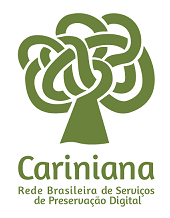Avaliação da reparação de feridas padronizadas em coelhos tratadas de forma seriada com plasma rico em plaquetas autólogo gel
DOI:
https://doi.org/10.5433/1679-0359.2016v37n6p4131Palavras-chave:
Cicatrização, Coelhos, Feridas, Plasma rico em plaquetas autólogo.Resumo
Estudos recentes demonstram uma evolução do papel do plasma rico em plaquetas (PRP) na cicatrização de feridas. No entanto, os protocolos para tratamento baseiam-se em uma única aplicação do PRP. Para avaliar o efeito da aplicação seriada do plasma rico em plaquetas autólogo na forma gel sobre a cicatrização de feridas cutâneas em modelos experimentais in vivo, induziu-se feridas no dorso de seis coelhos brancos da raça Nova Zelândia com auxílio de um punch de 8mm. O lado direito foi considerado controle (A) e tratado com NaCl 0,9% e o lado esquerdo (B)e tratado com gel autólogo de plasma rico em plaquetas. As lesões foram avaliadas por um período de 17 dias. Nos dias 0, 10 e 17, as feridas foram avaliadas morfológica e morfometricamente. No 17º dia foi feita biópsia para avaliação histopatológica. Macroscopicamente, as feridas tratadas com PRP evidenciaram melhor cicatrização e maior porcentagem de contração quando comparadas as feridas controle. Com relação ao percentual de contração das feridas, verificou-se que a média das feridas tratadas com plasma rico em plaquetas autólogo gel foi de 95%, enquanto o lado controle foi de 88%. Concluiu-se que o PRP autólogo gel é eficaz e acelera o processo de cicatrização, quando aplicado em intervalos curtos e de forma seriada, comprovando seu potencial terapêutico sobre lesões cutâneas, podendo ainda ser uma alternativa de tratamento de feridas.Downloads
Downloads
Publicado
Como Citar
Edição
Seção
Licença
Copyright (c) 2016 Semina: Ciências Agrárias

Este trabalho está licenciado sob uma licença Creative Commons Attribution-NonCommercial 4.0 International License.
Semina: Ciências Agrárias adota para suas publicações a licença CC-BY-NC, sendo os direitos autorais do autor, em casos de republicação recomendamos aos autores a indicação de primeira publicação nesta revista.
Esta licença permite copiar e redistribuir o material em qualquer meio ou formato, remixar, transformar e desenvolver o material, desde que não seja para fins comerciais. E deve-se atribuir o devido crédito ao criador.
As opiniões emitidas pelos autores dos artigos são de sua exclusiva responsabilidade.
A revista se reserva o direito de efetuar, nos originais, alterações de ordem normativa, ortográfica e gramatical, com vistas a manter o padrão culto da língua e a credibilidade do veículo. Respeitará, no entanto, o estilo de escrever dos autores. Alterações, correções ou sugestões de ordem conceitual serão encaminhadas aos autores, quando necessário.














